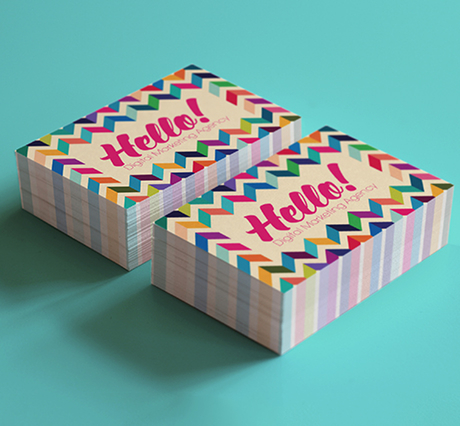When a contact hands you their business card, what do you do?
Do you tuck it in your pocket? Make notes on it? Revere it? The answer is likely dependent on where you’re from, or where you do business. Global business card etiquette can vary greatly, and for anyone who travels internationally for work, it’s worth knowing cultural business traditions. Here are a few significant examples of business card protocol from around the world. Being aware of them can help with international relations and developing rapport with professional contacts from other countries.
Japan
In Japan, etiquette dictates that you should accept a business card with both hands. Make sure to read it first, and not just shove it away in your pocket or handbag. When handing out business cards, it is important to ensure that your title translates properly into Japanese. This is because status is an important factor in Japanese business dealings.
China
Global business card etiquette in China follows the protocol of examining each business card you receive before putting it away. You should never write on received cards, either. When seated, it is common to place all the business cards you’ve received on the table in front of you. Regarding you own card, you should offer it with both hands. Opt for translation of its contents in Mandarin or Cantonese on the other side, depending on which region of China you’re visiting. Finally, if it’s at all possible, integrating some red and gold into your business card design is an excellent idea. The colours are considered lucky in Chinese culture and will be noticed by your business contacts.
Korea
Korean professionals have specific traditions regarding giving and receiving business cards. It is polite to present your card with both hands outstretched. Once it’s taken, drop your left hand and present the card with your right. Finally, after it is taken you should use your left hand to grasp your tight arm just above the wrist. It is also polite to nod your head to show respect when receiving a business card, particularly if it is from someone higher ranking than you. But don’t study their card too long, as that is rude. It’s okay to put it away. Furthermore, it’s wise to present your card before asking for someone else’s.
India
In India, translation of your business card into Hindi or a local dialect is probably unnecessary, as most professionals speak English. However, you should ensure that your qualifications are clearly stated on your card. Global business card etiquette also states that in India, cards should be given and received with the right hand only.
Middle East
In the Middle East region, it is good business etiquette to put a translation of your business card, most often in Arabic, on the back of your business card. When presenting it to a new contact, you should always do so in your right hand, with the Arabic side up.
Colombia
When doing business in Colombia, etiquette details that you should present your card by holding it at one corner, between your thumb and index finger. Upon handing it over to someone, take care not to cover up important information.
Western Europe
There are fewer “rules” in place in Western European countries regarding the distribution of your business cards, but a few guidelines are typically followed. It’s considered impolite to pass out your business cards like you’re dealing a stack of cards, and you should refrain from placing a stack of your cards on a table during a reception.
UK And North America
Finally, in the UK, America and Canada, there are not many traditions regarding global business card etiquette. Business cards are not normally used in personal life, however. Otherwise, handling of them is informal and without ceremony. Cards should simply be neat, presentable, and only handed out to those who present their card first.










